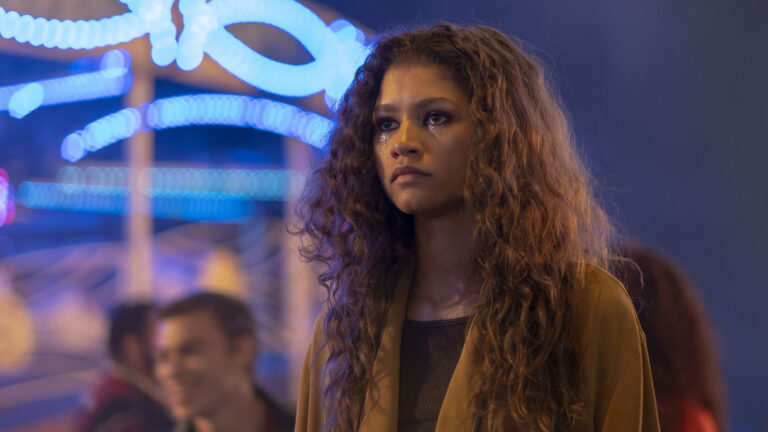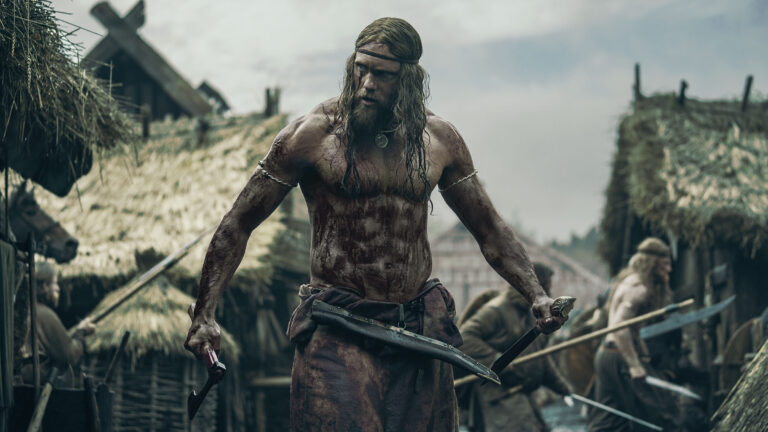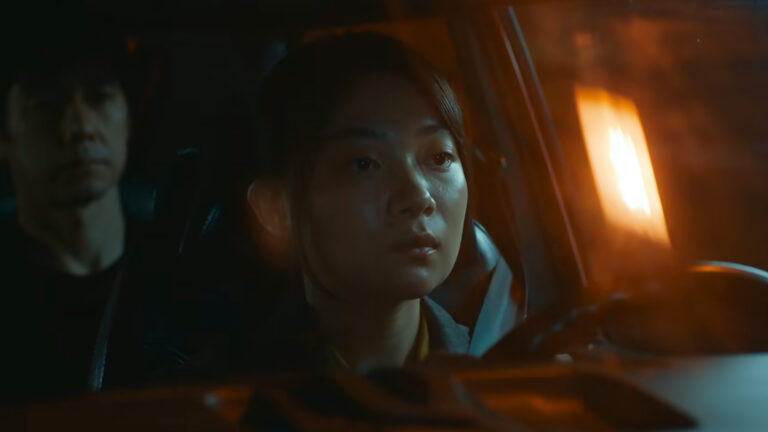Today we’re speaking with editor Jennifer Lilly about the Master of None series, which won her a Primetime Emmy for series editing in 2017 and is now in its third season, titled Moments of Love.
Jennifer has a flair for shaping the stories that lie outside of the bell curve, as shown in Bo Burnham’s Eighth Grade, as well as The One I Love and Electrick Children. So, to learn about what she calls “the brave edit,” read on.
Listen while you read…
HULLFISH: Tell me about the choice of aspect ratio. Is that something that the cinematographer and the director chose, or was it something that you spoke to?
LILLY: There was always the intent to have a very formal approach to the show, we were taking the page from European masters. That was the aesthetic choice Aziz and the director of photography decided together as they started testing and seeing what would best capture the tone and tenor of the show.
HULLFISH: Did it have any ramifications on your editing?
LILLY: Not really; there was no wiggle room north or south. It was completely full frame because it was shot on film on 16mm. It was fun to see there be a little light leak at the bottom; it really filmed stuff going on at the edges.
HULLFISH: Did the fact that it was shot on film make any difference to you, or was that more something your assistant editor had to deal with.
LILLY: It was interesting because I was cutting in New York, and the production was in London, so we had this natural lag. Honestly, what does affect me is just the timing of when I can get my dailies when we go through the film process and then to telephone again, but that was all done by the time I had gotten to the cutting room in the morning, so I got dailies at regular times.
HULLFISH: Yeah, that time change probably helped.
LILLY: Exactly, the time changed helped me. I was in a cutting room here in New York while the rest of the edit team was in London. From time to time, Alan or other colleagues would be in LA, but mostly I had a master clock under my center computer of London time, New York time, and LA time.
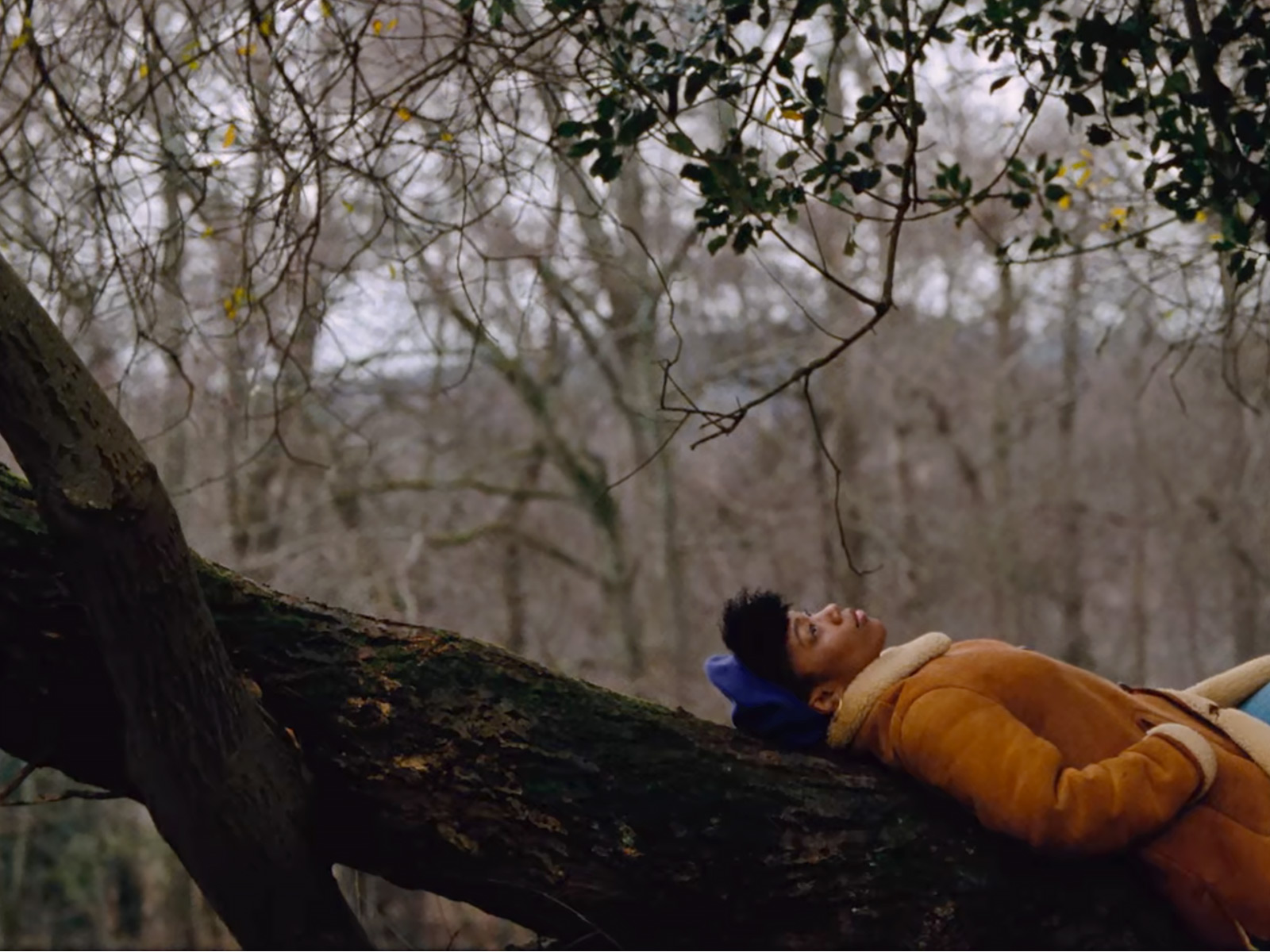
HULLFISH: Can you talk to us about the aesthetic of the cutting?
LILLY: Talking to Aziz very early on about the concept for this season was very exciting. It is remarkable when you watch the show just how different the look and the feel is. That’s always something that Alan and Aziz are looking to do. They want to push the boundaries. They’re driven by the next idea that’s exciting to us. They’re not going to make another season just because it did well on the last one. The cutting style is quite lyrical; it’s very much about the essence of what we’re trying to say. It’s minimal coverage, which was exciting to me as an editor to be able to flex those muscles. As the season went on, we figured out the rules and vocabulary of the show, which turned out to be about juxtaposition.
It’s much more of a psychological edit, particularly in episode four. Some ideas changed while we were shooting, but the script laid out very specific progression, but as time went on, it became clear we might need another shot in the hospital, or we could use more inserts, and what should those inserts be? It was like that for that whole episode; it was very dynamic.
HULLFISH: Tell me about what coverage there was that you decided not to use and how much the director and director of photography said, “This is what we’re giving them.”
LILLY: At the beginning of the schedule, there was more coverage until we could find our voice and find the tone that we could feel confident in. That it was going to work, that it was going to create the mood and the style that we were going for. So as the schedule moved on, we got to really focus on what’s the meaning of the scene and what’s the most important piece of the scene. You take many takes to make sure that you have a whole scene, but also that the piece of this scene that’s really supposed to resonate is really working.
HULLFISH: The cutaway shots that you chose, like the birdhouse, for example, seemed very European to me. What was the purpose of those, why did you choose them, and how did you find them?
LILLY: The function was really passage of time shots. We did not use devices like pre-lapping audio. Having those nature interstitials and evocative beauty shots was like a breath of fresh air. The vocabulary we described as the punctuations, and it did take some experimenting, and there was definitely inspired by a European style.
It was very compelling for a nerdy editor like me. It was amazing to me how different this can play with even moving things around by five frames. When you make changes in a sequence like that, you can’t go back five seconds and replay it to see if it works. You’ve got to go back to the beginning and watch how it affects the whole piece. Of course, we’re thinking about the audience a little bit, but in the initial phases, when you’re piecing it together, you just have to try the brave edit and see what happens.
HULLFISH: The brave edit. What does that mean?
LILLY: For example, someone sitting in a Laundromat and looking exhausted. How long does it have to be for us to really convey just how exhausted? How long can we hold on to that to really push for that feeling? There’s subtle stuff, but sometimes when you’re cutting, and you’re building something, you have these voices in your head saying, “This isn’t done.” “What’s the studio going to say?” “What’s the audience going to say?” but to make the brave edit, sometimes you just have to be with these characters, feel this story and give it the amount of time it needs.
HULLFISH: There’s a tendency to think, “What’s the director going to want?” Or “What’s the studio going to want?” and you do have to get those voices out of your head, right?
LILLY: You do. You definitely have to start there and let the creative process happen; otherwise, you start telling yourself “no” even at the beginning, when you have no idea what the results are going to be. It’s so important to keep an open mind with your own work, your own creative spirit, and the director’s intent. I always love to explore what the intent is and figure out if we can make that work, but it’s also important to see what possibilities are available to us.
You definitely have to start there and let the creative process happen; otherwise, you start telling yourself ‘no’
HULLFISH: Did you have any discussions about intent, or did they leave discovering the intent up to you?
LILLY: From the intention to our results and how close they are has been remarkable. Every single time I work with Allen and Aziz, it’s like nothing else I’ve seen; it’s really well thought out in the execution stage. Their enthusiasm and excitement for the work and the clarity for the work is very inspiring to all the departments.
HULLFISH: You mentioned that there was not a lot of coverage. What did you spend your time doing? And I don’t mean that in a way that it sounds, but a lot of what we do as editors is pouring through coverage. Did you have a chance to explore other things with that extra time?
LILLY: At the beginning of the day, I get everything organized, and I am watching everything. Then I try out a shot progression, even a scene-by-scene progression with this selects that I picked. It was sharpening my ability to say, “Here’s the most important part of the scene. What take would make that moment poignant? What is the best thing for that very specific moment?”. The refining process of trying to pace a show like that is time-consuming. I had a number of episodes I was working on at the same time. So I’m bouncing around a little bit, but oddly enough, it wasn’t as different from my usual workflow as I expected.
HULLFISH: One of the things that I noticed as an aesthetic of the show is that audio cuts off hard with picture. Can you talk to me about any of the other rules that you either discovered you were using?
LILLY: Whenever we try something, it’s pretty clear that “It’s not the show. That’s not the show.” We felt it in our bones when we tried something and thought, “Yeah, that’s cool. But it’s not in the spirit of what we’re doing here.” No hard cuts was one that we found, same with no pre-lapse, audio pre-lapse, post-lapse, obviously, no score. It’s a lot less music than we’ve ever worked with before on the show.
HULLFISH: Did you find that not having coverage revealed something or changed the way the edit felt?
LILLY: Yeah, sometimes when you truncate the head of a shot and let that moment land in the timeline in different places, it has a different impact. You take these deep dives into the real nitty-gritty minutiae of the scenes.
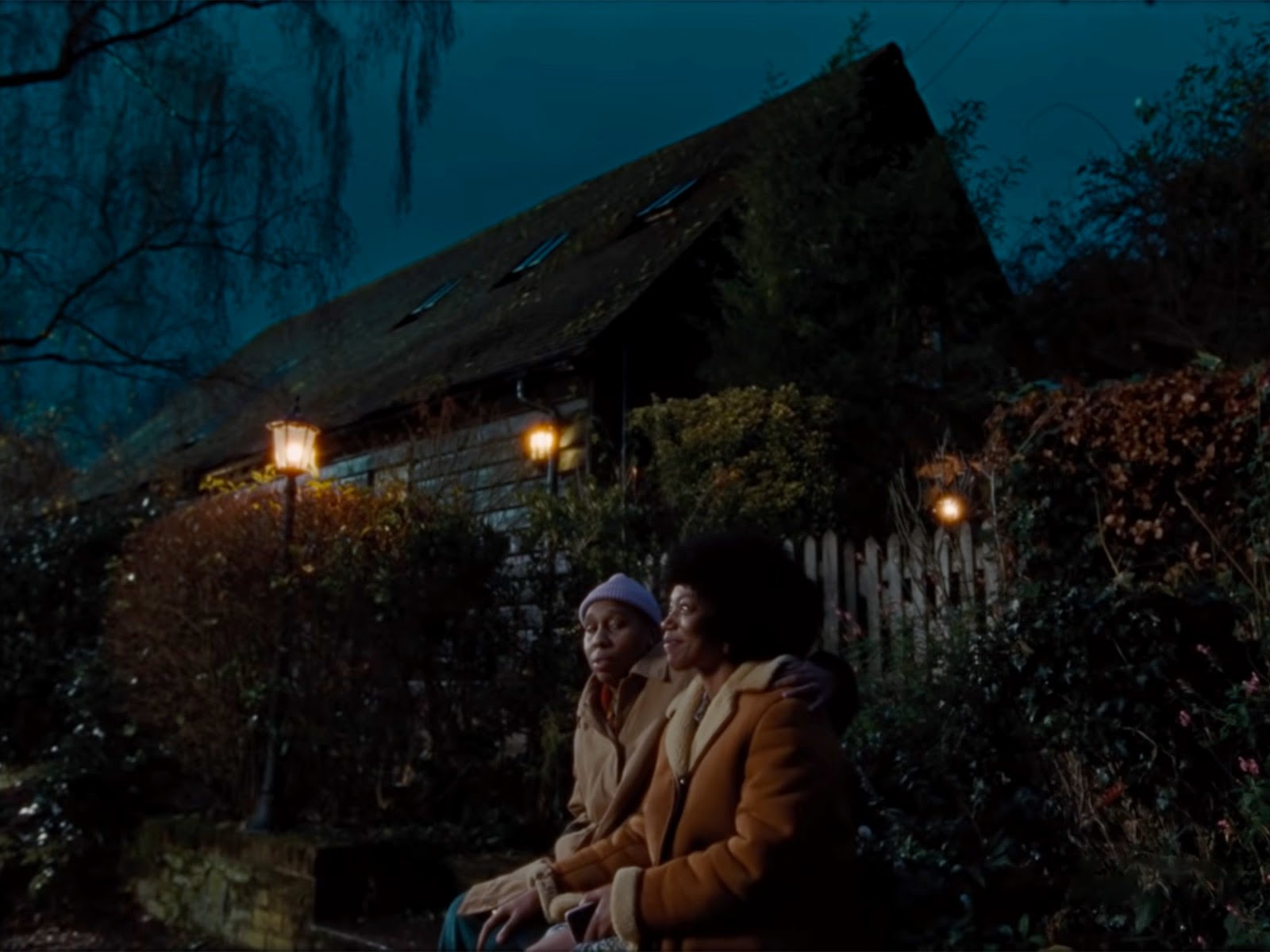
HULLFISH: With the small amount of coverage you had, did it change the way you watched the dailies?
LILLY: Certainly a lot of times. I like to see how coverage fits together; I like to get my cutting pattern sussed out so that I know what parts of the coverage I’m going to use by the end of the process. I’ve watched all the takes a hundred times, but in that initial phase, it sharpens my awareness of what I’m looking for.
HULLFISH: Did you pick the angle of the scene and then find the best take within that angle or did you look for the best performance and go with whatever angle it was in?
LILLY: The performance is the driving factor, and then deciding not to use a piece of coverage if need be. We would often hold on the person and not cut to the object they were picking up or looking at, which became part of our style and voice of the show.
HULLFISH: Why did you decide on that? What value does it add?
LILLY: It adds some mystery to it, which can be exciting, especially when it’s a real transition into a different moment in time.
It helps us digest what just happened, and it feels like you’re being given a privilege to be a fly on the wall for some of these very intimate, specific moments in someone’s relationship.
HULLFISH: So often people talk about an editor’s style, but you shouldn’t have a style, right? It’s the style of the work. Can you talk to me about personal style and staying away from it when necessary?
LILLY: You have to listen to the material and let that drive your choice and your experimentation, which is really exciting.
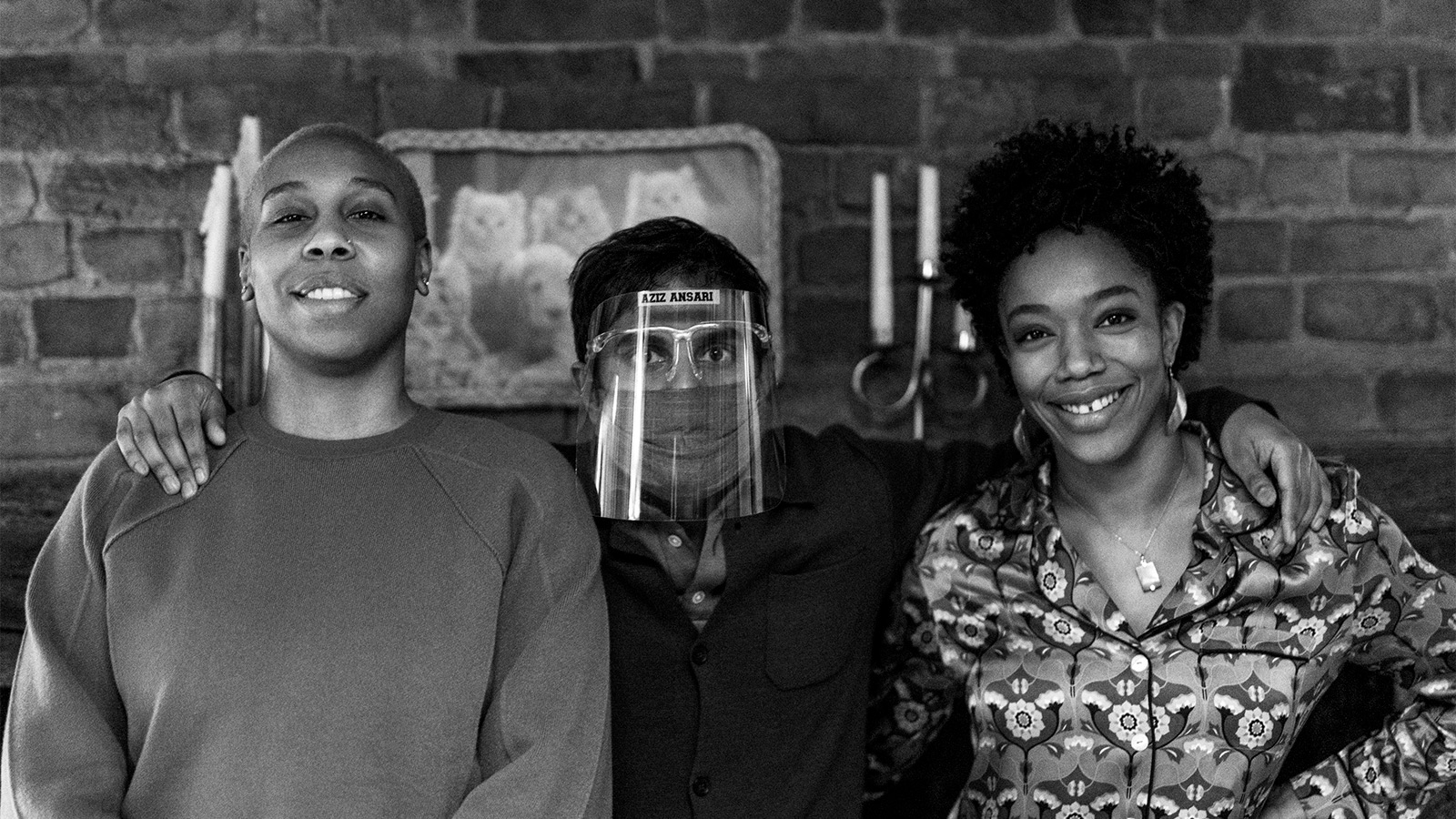
HULLFISH: How did you and your team collaborate? What kind of sharing did you do? What kind of discussion did the editors have?
LILLY: It all was changing and shifting because of the pandemic. Ben did the first two episodes, and I did the back three. She really set some of the tones, and I’d watch it. We’d talk about it some but not as much as I normally would like when I’m in the same country or even better in the same editing space.
HULLFISH: So you didn’t have your assistant editor with you either? Was the assistant also in London?
LILLY: Yeah, also in London.
HULLFISH: More and more, this has been the case with people during the pandemic
LILLY: We’re all very interested to see how it changes our industry and how that changes our work.
HULLFISH: We talked about this a little bit, but there’s no music except for a couple of diegetic music choices and an opera scene that carries over multiple scenes. Can you talk to me about that?
LILLY: It was one of those choices where the show has always had music, but it’s always been important to the creators to have it very sparse, as with all the other elements of the show. We did play a little bit with it at the beginning, but it was clear that those few diegetic moments really stand out when you see them.
HULLFISH: When it comes to sound design, it felt very subtle. How did it inform the mood of the show, and were you the one to add it in?
LILLY: The sound design is very subtle. The beginning has a very romantic lens, and I think the sound mimics that. Anything out in the country is more idyllic and quiet, but then you get to New York, and there’s always something going on like that jackhammer, and it feels more invasive.
HULLFISH: Did you place those things in there to give yourself that tone?
LILLY: We did place a lot of those. I think that juxtaposes when the characters are in moments of isolation. The lack of sound that Denise is feeling in the country and how the quiet can be as terrifying as when you’re going through something in the city, and you just needed peace and quiet, but there’s this jackhammer. I think sound-wise, that juxtaposition was important to describe what was going on emotionally.
HULLFISH: Do you have an agent? And if so, what’s the value they can offer?
LILLY: I do have an agent; we met early in my career. She has access to everything that’s going on. What scripts are coming in, who’s looking, what’s happening, what’s being developed, and pitching me for stuff that I would never have known was in the works.
Of course, it’s terribly uncomfortable to negotiate your own deal, so that’s always really helpful because you might not know what your value is or what you should be asking for. A lot goes into the process.
What you feel like, what you can ask for, and a lot of politics, I think having an agent is enormously helpful.
HULLFISH: They also have personalities, right? You can say, “Oh, this is the kind of project that I want to work on, these are the guys that are going to get me into the Marvel Cinematic Universe, and these are the agents that are going to get me onto a cool independent film. “
LILLY: That’s true; at the beginning, when I was early in my career, I didn’t feel I had the luxury to get to choose whatever I want. You don’t get to choose whatever projects you want. You should always have that in mind, have your goalposts, but you have to be at a certain place in your career to do that.
HULLFISH: It’s one of those important things to have someone play good cop, bad cop on your behalf. You can be excited about a project but let your agent say “no” if the situation isn’t right.
LILLY: Yeah. It’s hard to fight for yourself, especially with producers you have very intimate relationships with after you landed the gig. After getting down and dirty with the negotiations and then showing up to work can be difficult.
Getting down and dirty with the negotiations and then showing up to work can be difficult.
HULLFISH: That’s an excellent point because if something goes wrong at the beginning, now you’re fighting uphill with someone the whole way. The same thing is true with the negotiation, Yeah, I got the money I wanted, but now this person hates me.
LILLY: Yeah. You get a vibe. With an agent, you don’t have to know exactly what happened in that conversation. They somehow worked it out, but between the producer and me, we’re cool since we don’t have that negotiation baggage.
HULLFISH: It was so interesting to explore this really unique show, and I hope people get a chance to watch it.
LILLY: So nice talking to you.


